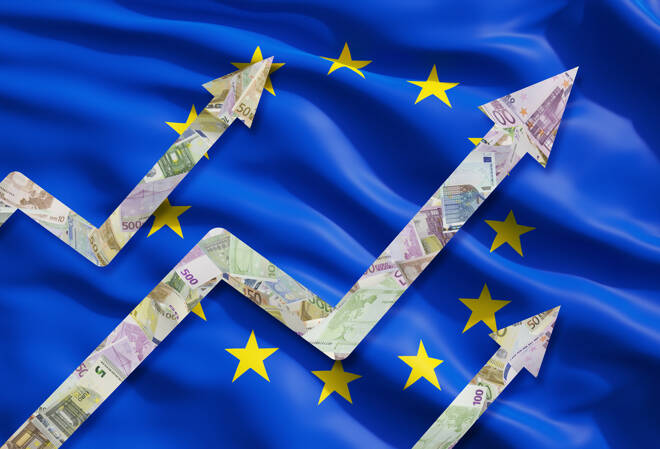Advertisement
Advertisement
European Equities: A Week in Review – 06/11/20
By:
Economic data, Brexit, and negative sentiment towards COVID-19 took a back seat. An expected Joe Biden victory drove demand for the European majors.
The Majors
It was a particularly bullish week for the European majors in the week ending 6th November.
The DAX30 and CAC40 rallied by 7.99% and by 7.98% to lead the way, with the EuroStoxx 600 gaining 7.02%.
Reversing losses from the previous week, the markets were able to brush aside negative sentiment towards COVID-19.
With EU member states reintroducing lockdown measures, the economic outlook for the 4th quarter looks grim, however.
Economic data also took a back seat in the week, with the U.S Presidential Election the key driver.
An expected Biden victory in the Presidential Election was the most favorable outcome for the European majors.
Coupled with the Republicans holding the Senate, expectations of further monetary policy easing by the FED was also a boost.
Not even a jump in the EUR was able to pin the majors back.
The Stats
It was a particularly busy week on the economic data front. Key stats included private sector PMIs and industrial production and factory orders from Germany.
In the 1st half of the week, October’s private sector PMIs were in focus.
Finalized manufacturing numbers for France, Germany, and the Eurozone all came in ahead of prelim figures. Italy and Spain also reported a pickup in manufacturing sector activity.
Service sector activity continued to contract, however, with the Eurozone’s services PMI coming in at 46.9. This was down from 48.0 in September.
Manufacturing sector activity continued to support, ensuring that the Eurozone’s private sector avoided a contraction. The Composite PMI came in at 50.0 for October, which was down marginally from September’s 50.4.
In the 2nd half of the week, German factory orders and industrial production figures were in focus.
Both sets of numbers fell short of forecasts, though both were on the rise in September
Factory orders rose by 0.5%, with industrial production increasing by 1.6% at the end of the quarter.
From the U.S
In the 1st half of the week, ISM Manufacturing and Service PMI and ADP Nonfarm numbers were in focus.
While manufacturing sector activity picked up in October, service sector activity saw slower growth.
The all-important ISM Services PMI slipped from 57.8 to 56.6.
ADP nonfarm employment change figures also suggested another speed bump in the labor market recovery. In October, the ADP reported 365k nonfarm payrolls added. This was well short of a forecasted 650k and September’s 749k.
On Thursday, the weekly jobless claims failed to impress, with claims standing at 751k in the week ending 30th October. This was down marginally from a previous week 758k.
At the end of the week, nonfarm payrolls and unemployment numbers provided some relatively upbeat figures.
The unemployment rate fell from 7.9% to 6.9%, with 638k nonfarm payrolls added in October.
On the monetary policy front, the FED left rates unchanged at 0.25%, which was in line with expectations. The markets are expecting more action from the FED, however, should Biden win the Presidential Election.
The Market Movers
From the DAX, it was a particularly bullish week for the auto sector. BMW and Daimler jumped by 8.16 and by 8.39% to lead the way. Continental and Volkswagen saw more modest gains of 1.57% and 6.40% respectively.
It was a mixed week for the banking sector, however. Commerzbank fell by 1.41%, while Deutsche Bank ending the week up by 7.27%. Disappointing earnings had weighed on Commerzbank in the week.
From the CAC, it was a particularly bullish week for the banks. BNP Paribas and Soc Gen surged by 11.32% and by 12.37%, while Credit Agricole rallied by 9.59%.
The French auto sector also found support, with Peugeot and Renault gaining 6.74% and 6.87% respectively.
Air France-KLM partially reversed the previous week’s 14.59% with a 9.43% gain, with Airbus rallying by 11.84%.
On the VIX Index
It was just the 2nd week in the red from 7 for the VIX. In the week ending 6th November, the VIX slid by 34.61%. Reversing most of a 38% surge from the previous week, the VIX ended the week at 24.86.
Expectations of a Biden Presidential Election victory and a Republican victory in the Senate drove demand for riskier assets.
The likely outcome of the elections is now expected to place the responsibility on the FED to support the economic recovery.
Policy gridlock on Capitol Hill would also mean that Biden would be unable to repeal Trump’s tax bills.
For the week, the NASDAQ jumped by 9.01%, with the Dow and S&P500 rallying by 6.87% and by 7.32% respectively.
The Week Ahead
It’s another busy week ahead on the Eurozone economic calendar.
In the 1st half of the week, ZEW Economic Sentiment figures for Germany and the Eurozone and German trade data are in focus.
Expect the economic sentiment figures to have the greatest impact.
In the 2nd half of the week, Eurozone industrial production, trade data, and 2nd estimate GDP numbers will provide direction.
From the U.S, it’s a quieter week ahead. Inflation and consumer sentiment figures will draw attention in the 2nd half of the week.
With little else for the markets to consider on the economic calendar, Brexit, COVID-19, and U.S politics will remain key drivers.
U.S President Trump is busy with lawsuits and calling for recounts. A different outcome to market expectations would test support for the European majors.
About the Author
Bob Masonauthor
With over 28 years of experience in the financial industry, Bob has worked with various global rating agencies and multinational banks. Currently he is covering currencies, commodities, alternative asset classes and global equities, focusing mostly on European and Asian markets.
Advertisement
